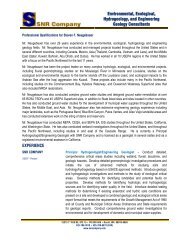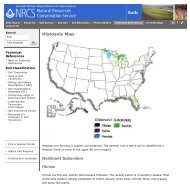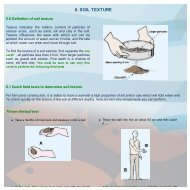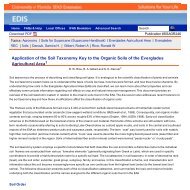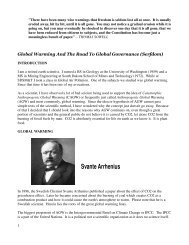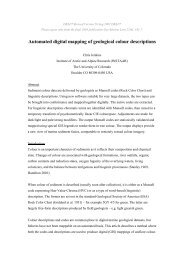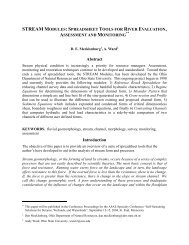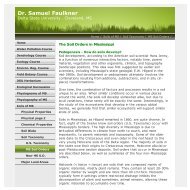chapter 3 fundamentals of fluvial geomorphology and stream ...
chapter 3 fundamentals of fluvial geomorphology and stream ...
chapter 3 fundamentals of fluvial geomorphology and stream ...
You also want an ePaper? Increase the reach of your titles
YUMPU automatically turns print PDFs into web optimized ePapers that Google loves.
• anticipate maintenance requirements <strong>and</strong> optimize thedesign to ensure that the benefits are sustainable; <strong>and</strong>• consider <strong>and</strong> propose the scope <strong>of</strong> a Post-ProjectAppraisal (PPA) <strong>and</strong> monitoring regime necessary toestablish the strengths <strong>and</strong> weaknesses <strong>of</strong> projectperformance.Geomorphic assessment alone is not sufficient to guaranteethat a project will perform adequately with regard to morphological<strong>and</strong> environmental goals, but it is a valuable <strong>and</strong> necessarycomponent <strong>of</strong> the integrated <strong>stream</strong> design process that isessential to ensure long-term sustainability in river engineering <strong>and</strong>management projects.3.11 SUMMARYFluvial <strong>geomorphology</strong>, analytical river mechanics, <strong>and</strong>sound engineering judgment together provide the foundations forsound river engineering, rehabilitation, <strong>and</strong> management. Insights<strong>and</strong> underst<strong>and</strong>ing provided by geomorphic principles <strong>and</strong>identification <strong>of</strong> causal links between channel form, <strong>fluvial</strong>processes, <strong>and</strong> connectivity <strong>of</strong> the river system can be invaluablein the design <strong>of</strong> river projects <strong>and</strong> management strategies. This isthe case, not only because the engineering-geomorphic approachis consistent with environmental goals such as minimizing negativeimpacts <strong>and</strong> maximizing biodiversity, but also because solutionsthat recognize <strong>and</strong> deal with the causes rather than the symptoms<strong>of</strong> <strong>stream</strong> problems represent better engineering. Manyengineering stabilization <strong>and</strong> rehabilitation projects have failed, notas the result <strong>of</strong> deficient hydraulic or structural design, but ratherbecause the significance <strong>of</strong> <strong>geomorphology</strong> to the project <strong>and</strong> theproject to <strong>geomorphology</strong> have not been identified <strong>and</strong> accountedfor in the design. Experience is accumulating that engineeringdesigns guided by knowledge <strong>of</strong> the <strong>fluvial</strong> system are able toavoid having to attempt to ‘tame the river,’ instead working with theriver to produce schemes that have lower long-term maintenancerequirements. Engineering-<strong>geomorphology</strong> thereby opens thedoor to cost-effective, sustainable solutions that do not commitfuture generations to heavy <strong>and</strong> expensive maintenance.Fundamentals <strong>of</strong> Fluvial Geomorphology <strong>and</strong> Stream Processes 67



